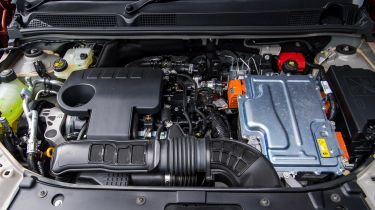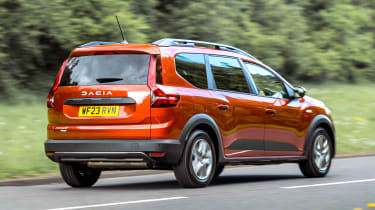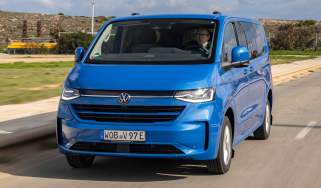Dacia Jogger MPV – MPG, running costs & CO2
Fuel-sipping petrol and hybrid engines mean the Jogger is cheap to run and buy
The Dacia Jogger is by far the cheapest seven-seater car on sale, costing around the same as an entry-level supermini. Of course, the entry-level Essential model is far from luxurious, so most people will end up upgrading to the mid-spec Expression – even this can be had for around £250 per month on PCP finance with a small deposit.
In cheap cars, you sometimes have to put up with hand-me-down engines that don’t offer fuel economy on a par with rivals, but the Jogger shares its powertrain lineup with the latest Renault Clio, so running costs are kept nice and low.
There are two engines to choose from. The entry-level 1.0-litre petrol engine will officially return up to 48.7mpg, which is what you could expect from hatchbacks like the Volkswagen Golf and Ford Focus. During our test of the Jogger, we managed 44mpg, although this figure was achieved when the car wasn’t fully laden, so it’ll be slightly less economical with all seven seats filled.
Introduced in early 2023, the 1.6-litre self-charging hybrid engine is even more efficient. Despite boasting more power than the 1.0-litre petrol, Dacia claims this will return up to 58.9mpg and will probably be the best choice for higher-mileage drivers. During our first test drive, we saw a figure of close to 70mpg on the trip computer, without any major efforts to drive economically. When we drove the car again in Britain it was easy to top 50mpg without overly careful driving, and it was noticeable that the car spent quite a bit of time driving through villages with the petrol engine off.
More reviews
In-depth reviews
With CO2 emissions of 132g/km and 108g/km for the petrol and hybrid engines respectively, both powertrains sit in fairly high Benefit-in-Kind tax bands, so the Jogger probably won’t make sense for company-car drivers, despite its low P11D price.
Which you choose may come down to how many miles you drive, and whether you plan on mostly town driving. Given that the petrol is around £4,000 cheaper for the same trim level, low-mileage owners may never recoup the difference if they choose the Hybrid. High-mileage drivers and those who appreciate the benefits of the electric motor in town should certainly appreciate, and eventually, make a saving with the Hybrid though.
Insurance groups
No matter which version of the Dacia Jogger you choose, all should be relatively inexpensive to insure. Joggers fitted with the 1.0-litre petrol engine sit in insurance group 13, while the pricier self-charging hybrid models are bumped up to group 15.
Warranty
Like every Dacia, the Jogger gets a fairly unexceptional three-year/60,000-mile standard warranty. However, through Dacia’s new Zen warranty service, this can be increased to seven years and 75,000 miles at no extra cost.
Once the standard warranty period expires, Dacia customers can service their vehicle at an authorised service centre to add one extra year and 18,000 miles to their warranty, up to a maximum total of seven years or 75,000 miles, whichever comes first. The scheme also applies to used Dacia models so long as they’re less than six years old. It’s a much more impressive warranty compared to the standard three-year/60,000-miles offer, although it still can’t match Kia’s seven-year/100,000-mile warranty, or Toyota’s 10-year ‘Relax’ warranty.
Servicing
Dacia offers four service plans, which apply to any Jogger model. The options cover either three or four years and range from 30,000 miles up to 60,000 miles. Prices start from just £13.99 a month, while the four-year, 60,000-mile servicing package with one MoT is £23.99.



















